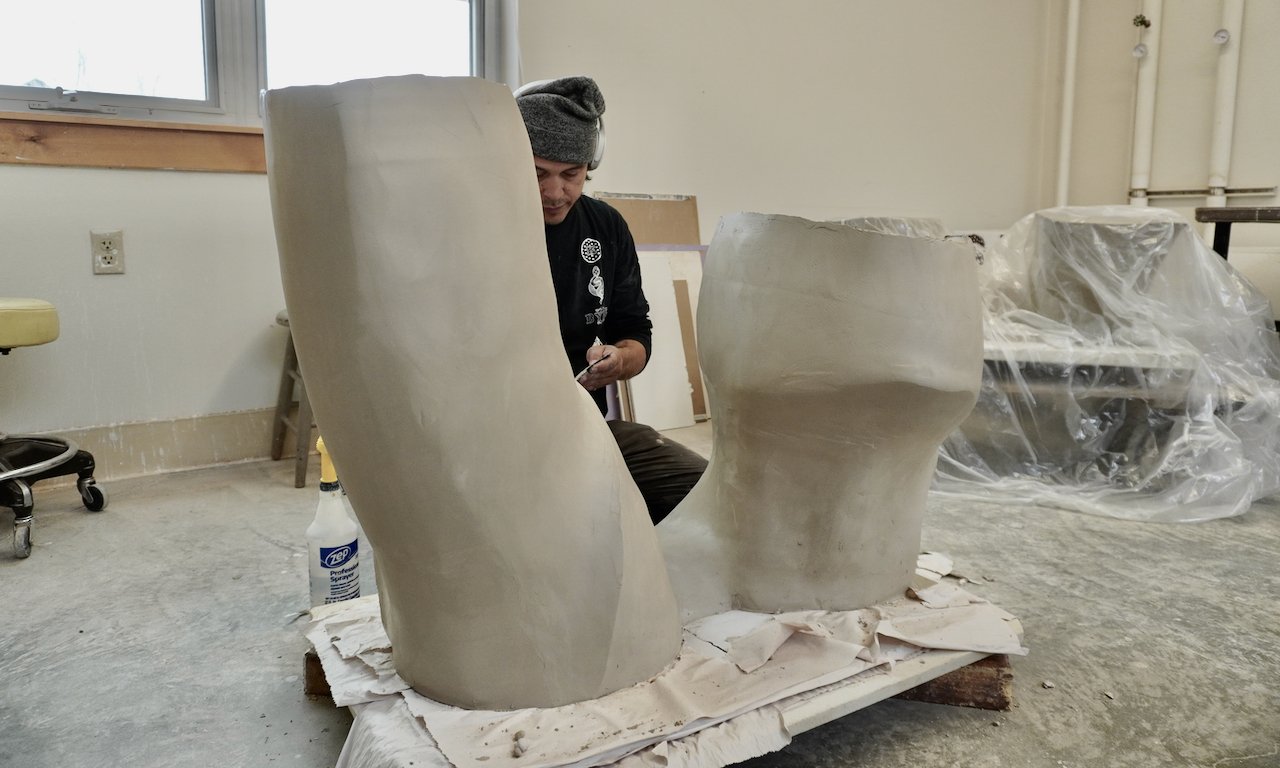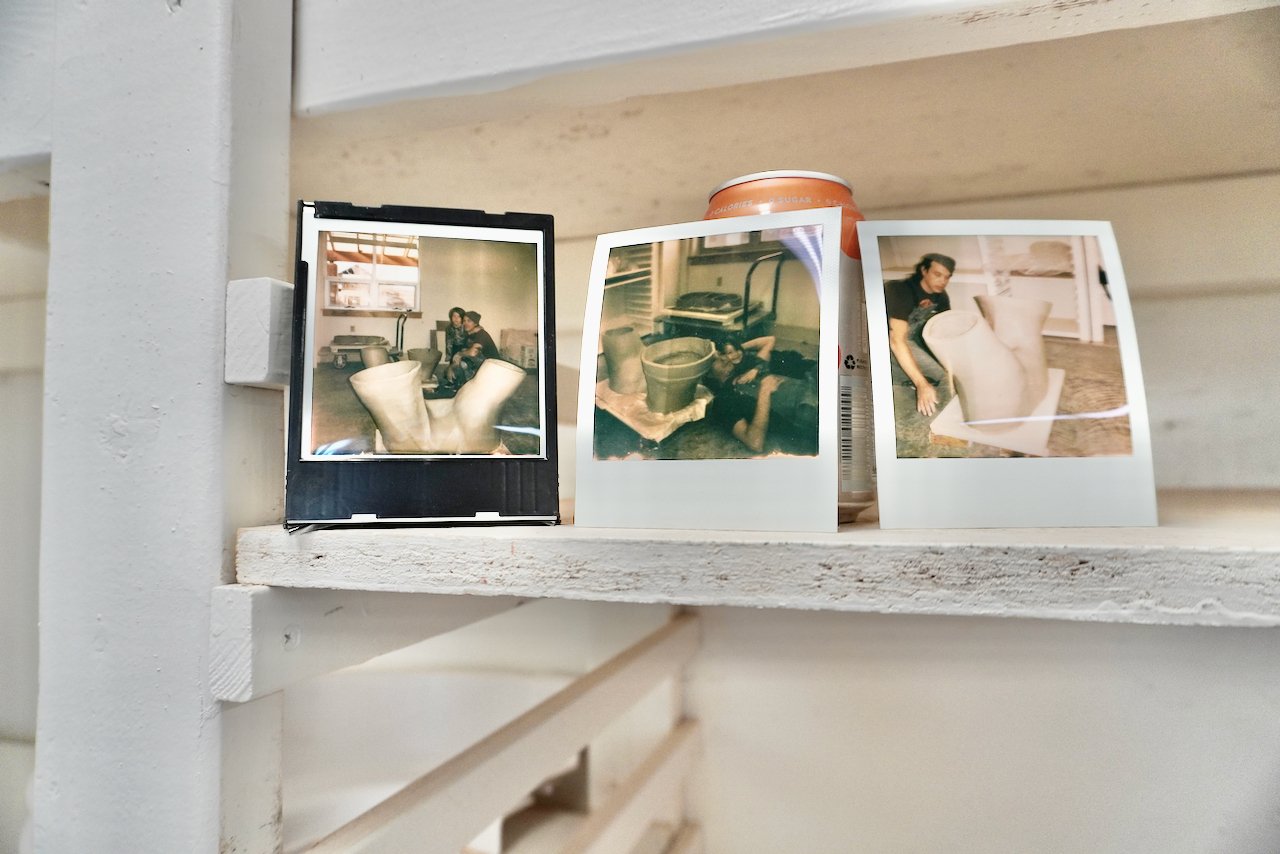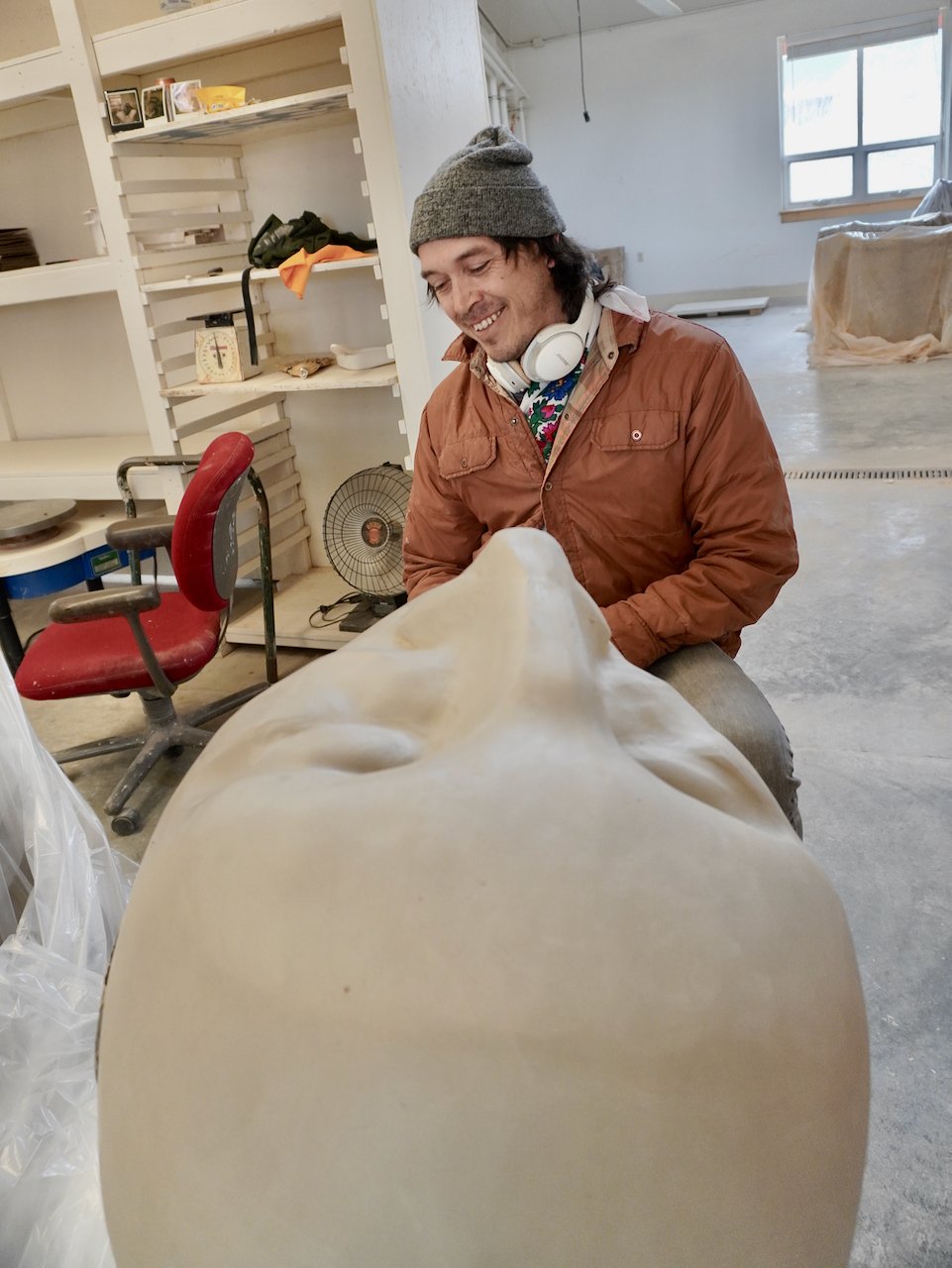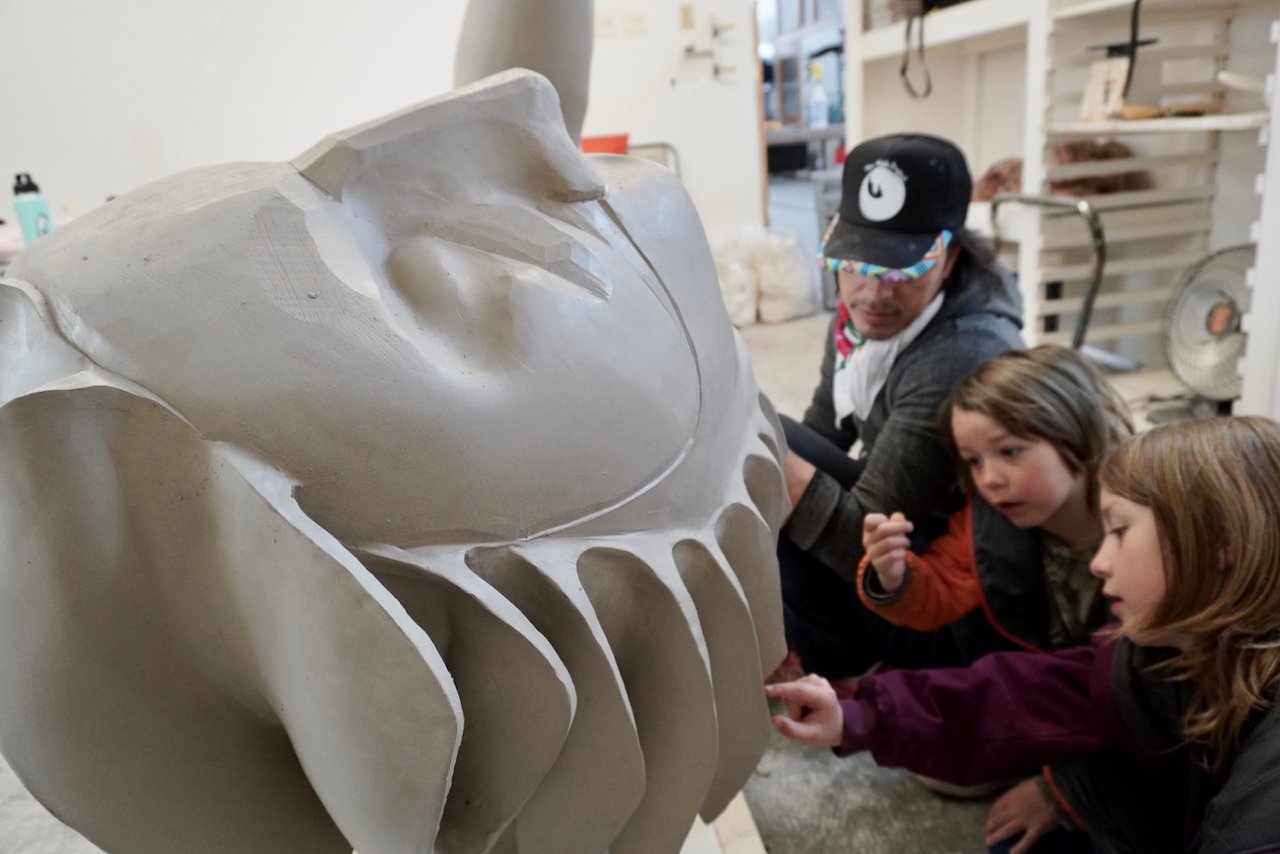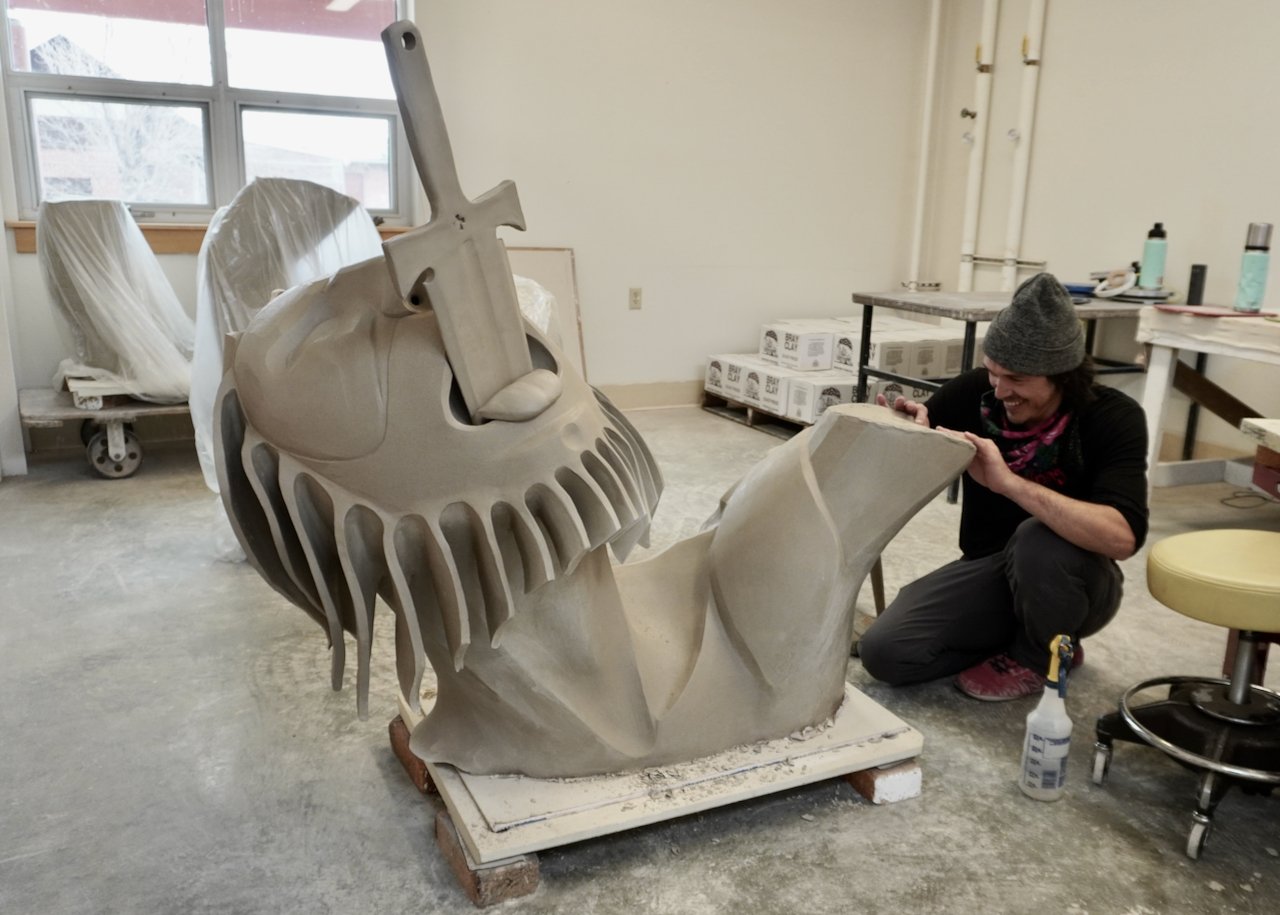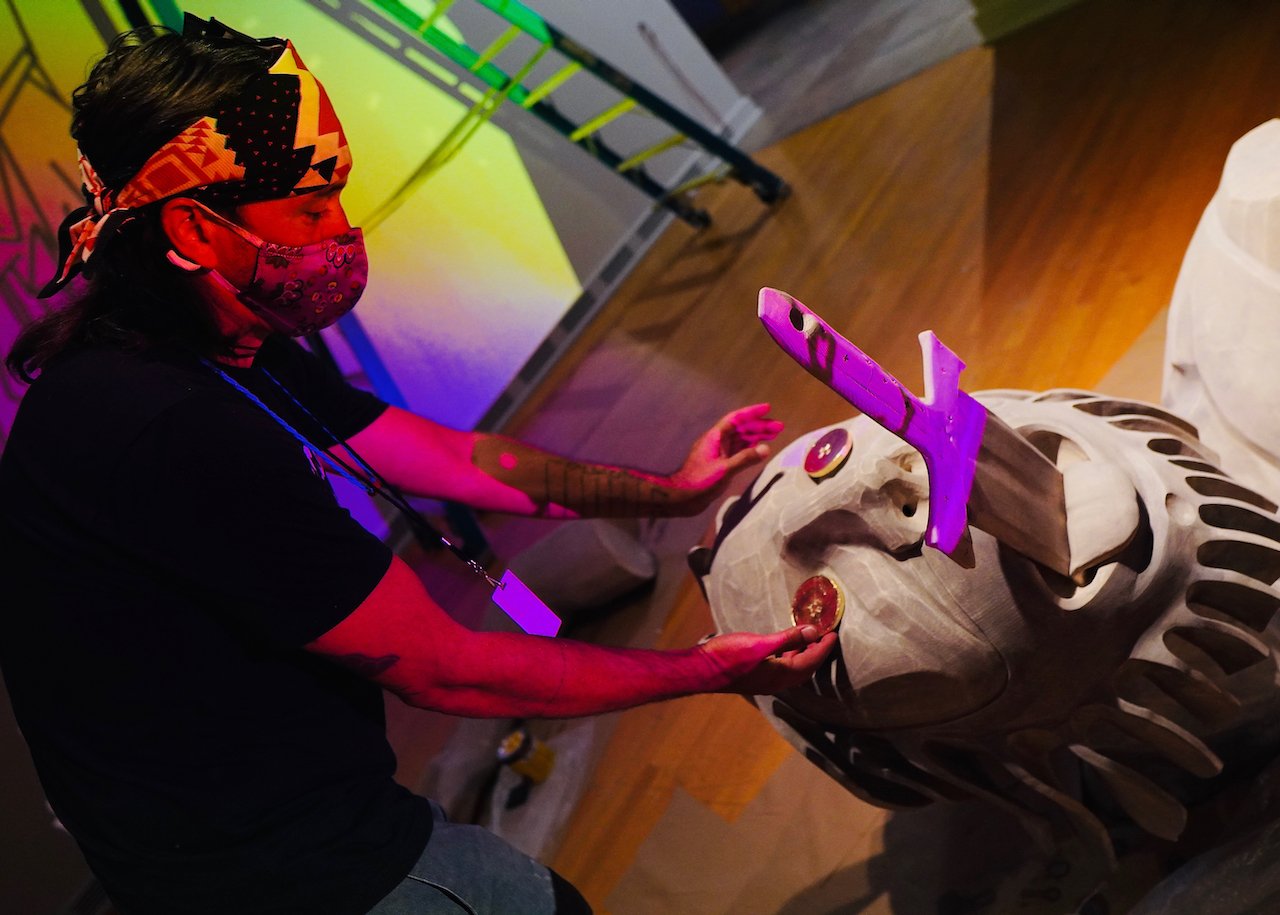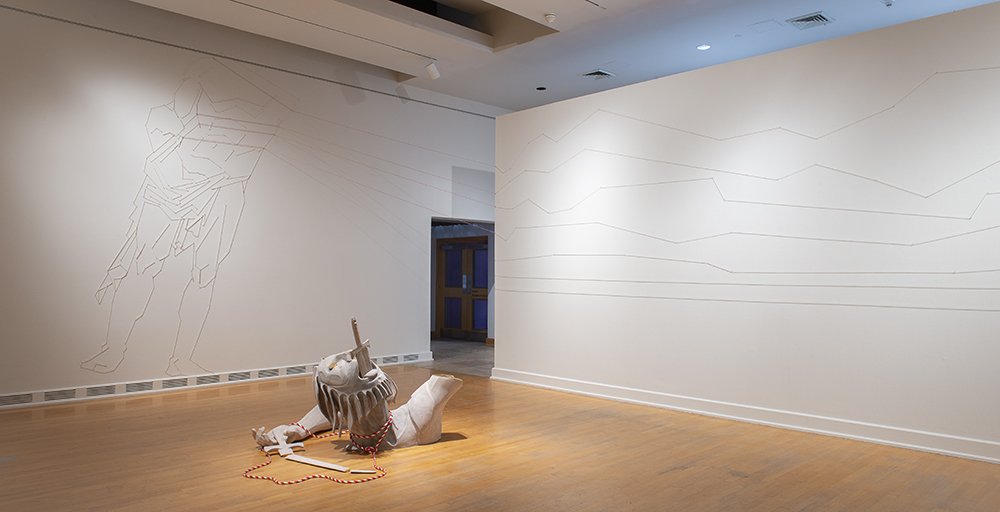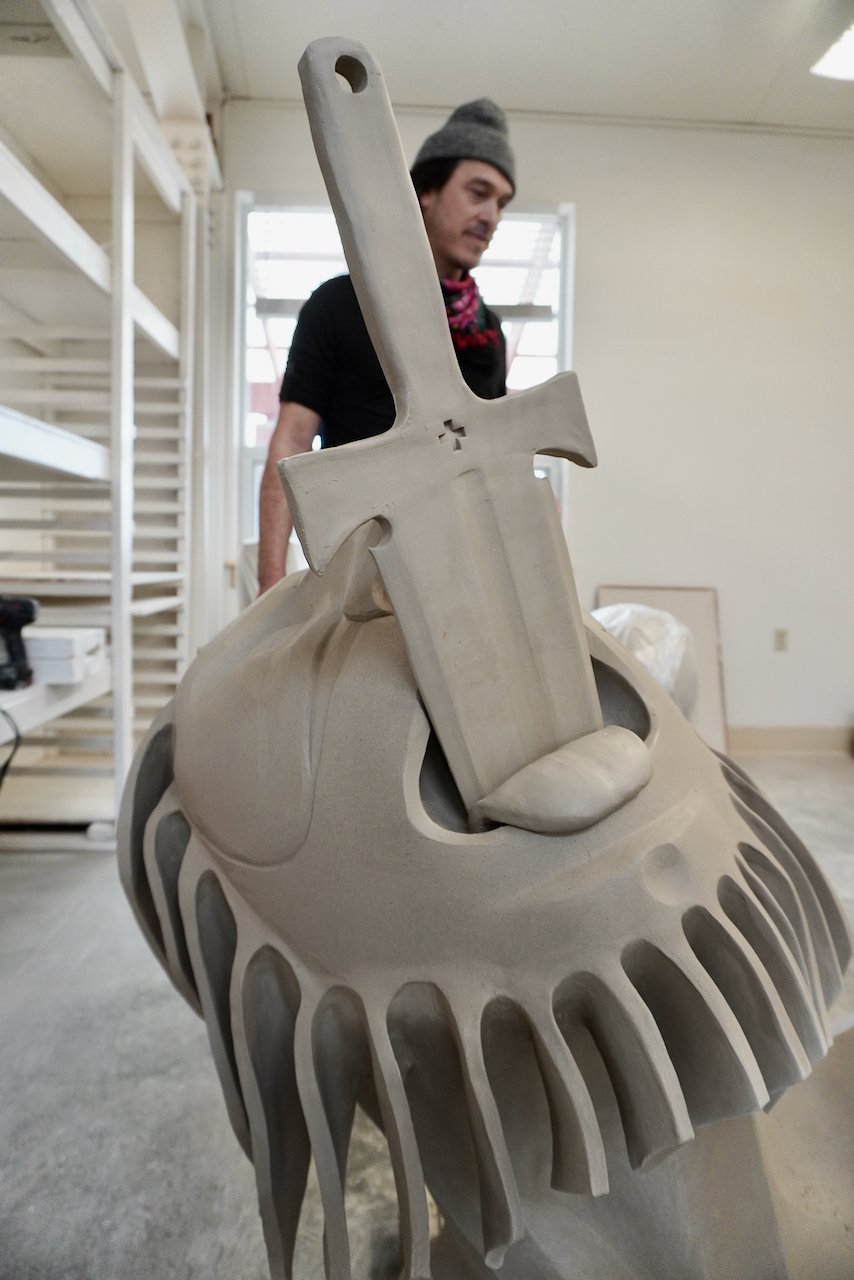The ruin of Dominion (And other Gods we never named)
Cannupa Hanska Luger, 2021
ceramic, gold leaf, fiber, shadow
48 x 72 x 72, installation dimensions vary
Installation for Undoing Time: Art and Histories of Incarceration at ASU Art Museum.
In researching the history of incarceration for the Undoing Time exhibition, Luger was struck by the oldest notions of captivity and the persistent human drive to have dominance over the living. Much popular, lurid attention is given to ancient practices of sacrifice and bloodletting in historic Indigenous American and central American cultures. There is much less recognition of violent postcolonial systems of captivity and slavery which have been driven by Western spiritual and cultural beliefs and have led to current mass incarceration. In order to confront this centuries-old urge to cage and control bodies, Luger felt it needed to be named and given a deity so it could then be toppled.
The monumental male bust at the center of Luger’s installation, The ruin of Dominion (And other Gods we never named), is hand-built in clay then painted and gold-leafed. By contrast, the body on the wall is constructed of string and shadows. With both, Luger references the history of Western heroic sculpture; the partially nude form wears a draped mantle like honorific Greek and Roman sculptures and the bust’s exaggerated, elongated proportions are reminiscent of early 20th century European monuments. The figure is physically connected to string and light drawings of horizon lines, as if the land has pulled down the false god. The installation recalls sculptures that have been toppled in response to fallen governments like in the former Soviet Union, or more recent community actions to remove public statues that celebrate systemic racism and inequality.
Undoing Time: Art and Histories of Incarceration considers the foundational roots of confinement from philosophical, sociological, theological and art historical perspectives to better understand the fact that today’s mass incarceration crisis is centuries in the making.
